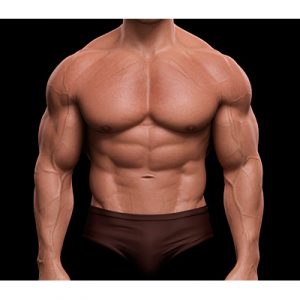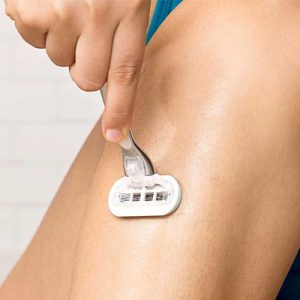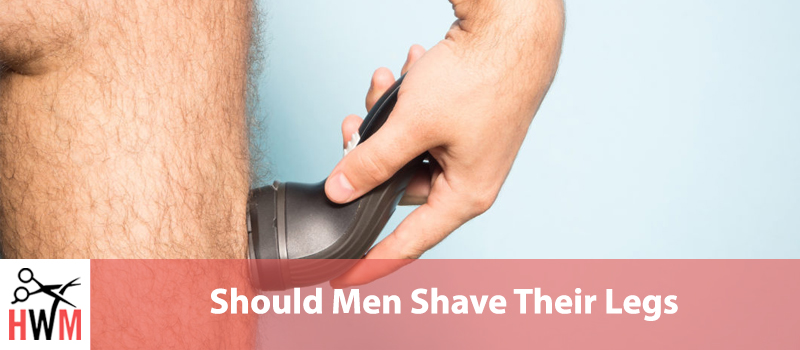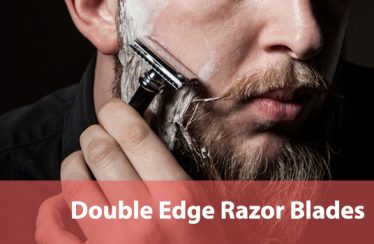Over recent years an increasing number of men have started to shave their legs. Making some to wonder if shaving your legs is something that all men should consider. Leg hair serves no purpose; unless you live in really cold climates, I guess. It leads to the question of should men shave their legs.
In this article, we will discuss the reasons that some men choose to shave their legs, whether it is for cosmetic purposes, sports, or just personal preference. We will also discuss the ways that men are removing their leg hair, as well as what women seem to prefer. Finally, we will discuss any medical issues related to hair growth. For men who decide to go on and shave their legs, we will include some leg shaving tips. Should be an interesting journey, so let’s begin.
- Why Men Shave Their Legs
- Leg Shaving Myths
- What Causes You to be Hairy
- Hair Removal Methods Men Use
- What Women Think About Men Shaving Their Legs
- Tips for Shaving Your Legs
Why Men Shave Their Legs
In general, men shave their legs for 3 reasons; specific activities, heat, or personal preference. Here are some of the more specific reasons.
Swimming and Biking
We aren’t sure if there is much truth to the idea that shaving leg hair makes you more aerodynamic, but apparently many swimmers and bikers believe it may have a slight influence on the speed. That is likely what makes these the most common reason men shave their legs.
There is another reason that swimmers especially may want to remove their leg hair. Swimming in chemically treated water, like chlorine, can have very negative effects on the texture of hair. Anyone who has ever been swimming can probably understand if they felt the hair on their head.
Shaving the hair eliminates the effect of the pool water on the hair. Professional swimmers usually take care to use moisturizers and other creams and lotions on their entire body. This helps to soften the skin as well as rehydrate it after swimming.
Body Building
 We’ve all seen bodybuilders oiled up and flexing their muscles in competition or on a magazine or poster. When it comes to body hair and lifting, there are several reasons they may not go well together.
We’ve all seen bodybuilders oiled up and flexing their muscles in competition or on a magazine or poster. When it comes to body hair and lifting, there are several reasons they may not go well together.
First, many heavy lifters will use their legs for leverage, you know how they pull a barbell to their thighs before lifting it over their head. Now imagine hair getting caught between the gloves and the bar, or that the bar slips slightly down the legs. Well, that may just be considered a way to remove leg hair…Ouch!
Second, bodybuilders sweat… a lot! Leg hairs, especially longer hair absorbs the sweat which decreases the rate that sweat evaporates or dries. No one wants to follow someone on a machine after they have been sweating buckets.
Finally, professional bodybuilders want to be able to show every defined muscle. It can be hard to see much definition through dark or thicker leg hair. Shaving the hair may increase the body builder’s appearance to judges.
Heat
Ask any man who has to work outside in temperatures that linger around 100⁰ F, and they will tell you that anything that can even slightly cool them, they are going to try. This is often seen especially in men who are required to wear pants while working, such as construction workers, railroad crews, etc.
Another heat-related issue is the amount of sweat that may be produced, similar to bodybuilders, leg hair absorbs sweat this may actually decrease the cooling purpose of sweating. Some men also experience issues with chafing when working in extreme heat. Hair can cause chaffing to worse, or at least become more irritated.
Tattoos
Many men spend hundreds or thousands of dollars on great ink. It makes sense that they would want to show off that ink as much as possible. Not only do tattoo artists shave an area in preparation for the tattoo, men with tattoos on their legs know that the hair growth during the healing process of a tattoo is one of the most annoying and itchy experiences.
Models
Male models are commonly known to shave their legs, this is especially popular for models that are used in more androgynous campaigns. Though most male models shave their legs as not to distract from whatever they are selling.
Sand Fleas or Other Mites
With the rise in military forces sent to more arid climates like Iraq and Afghanistan, many men have actually been required to shave some or all of their body hair to help prevent the infestation of sand fleas and other mites that can easily attach to body hair. Not only does this make shaving a safety issue, but can even become a health issue if an infestation is bad enough. Though leg hair is less commonly required to be shaved, then say back hair it is still highly recommended.
Working Around Flammables
If you have never worked with flammable material, then you may not know that human hair is one of the most flammable natural substances. Hold a lighter new your arm hair and you will see just how quickly the hair melts. Melted hair in large amounts becomes almost a plastic type texture that can stick to the skin. Body hair poses and increases the risk of burns. This means that many men are required to shave some or all of their body hair for safety precautions.
Personal Preference
Finally, some men just prefer to shave their legs. Part of the trend referred to as manscaping, men have started to embrace the idea that grooming of all types is preferred over the more natural states common in previous years.
The reasons men decide to just shave their legs may be due to the amount of hair they have, the color, or even the texture. Modern men do not necessarily equate hairiness with manliness like in previous generations.
Leg Shaving Myths
There are several common misconceptions out there about shaving and some interesting or even weird ideas about men shaving their legs in particular. Here are a few we wanted to dispel.
Only Homosexuals Shave Their Legs
We can’t help but shake our heads at the idea that somehow body hair can symbolize someone’s sexual orientation. Now, we will admit that in decades past, it may have been more common for gay men to shave their legs, but this is the 21stcentury, right? Shaved legs cannot identify a man’s orientation any more than hair color can identify IQ. Let’s leave the stereotypes behind and move on.
Shaving Makes Hair Grow (faster or thicker)
This is probably the most common myth surrounding hair growth and shaving that has been around seemingly forever. This myth has been scientifically debunked multiple times, shaving any of the hair on your body with not in any way impact the growth rate or thickness.
However, the one way that shaving can impact hair growth is if the skin is damaged or excessively irritated. This may lead to the hair follicles being affected. The likely result is slower growth rather than faster.
A Sharp Razor Causes More Nicks and Cuts
 This one has always been confusing. There are several people that believe that a new razor should be used with extra caution until it has been “broken in”. This couldn’t be farther from the truth. A dull razor is actually much more likely to cause nicks and cuts, as well as other types of irritation and problems.
This one has always been confusing. There are several people that believe that a new razor should be used with extra caution until it has been “broken in”. This couldn’t be farther from the truth. A dull razor is actually much more likely to cause nicks and cuts, as well as other types of irritation and problems.
Most disposable razor manufacturers suggest you use the razor only 5-10 times before replacing it. However, when it comes to shaving the thicker coarse hair on your legs you will likely want to switch more often. After all, you are shaving quite a bit more hair than you do on your face.
You Must Push on Your Razor to Get a Close Shave
There is no reason to apply any amount of pressure to a razor while you are shaving. In fact, if you need to use pressure at all then this is a good sign you need a new razor. Putting pressure on the razor and forcing it into the skin will only serve to increase the chances of skin irritation, cuts, and razor burn.
A razor should glide along the skin and not cause the skin to indent or flex beneath the razor head. If you are having any issues getting a smooth glide, use a quality shave gel to shave and make sure to use moisturizers to soften the skin between shaving.
What Causes You to be Hairy
Ok, so obviously humans grow hair on their legs, it is actually one of the scientific traits of a homosapien. However, some men (and women) have a lot more hair than others. This led us to wonder what may cause this. So, we did some research and found there are biological and medical causes for increases in hair growth, especially on the legs.
Testosterone
Testosterone, specifically DHT (dihydrotestosterone) is a big player in hair growth. Men with higher levels of testosterone will be more likely to have thicker, coarse hair in many areas of their body. When it comes to leg hair, it is often common for the hair to grow rapidly at the onset of puberty and grows longer than in men with lower levels.
As a result, men with higher levels of testosterone that decide to shave their legs will probably find that they have to shave more often than other men. This may lead men to choose options that extend the time between removal, such as waxing.
Adrenal Gland
The adrenal gland is responsible for regulating hormones and producing cortisol. When there is an issue with the adrenal gland that causes a drop in cortisol production, hair growth may increase. Cortisol inhibits DHT, so when it decreases, DHT works harder to impact hair follicles.
Weight Gain
In addition to dealing with excess weight, weight gain, especially if it is sudden can cause a strange case of increased hair growth. Not only can this be a sign of issues going on in the body, but it can also become a hygiene issue for men who are not used to having the amount of hair present.
Medications
Several types of medications can impact hair growth rates, obviously testosterone, but also steroids and even some anti-seizure medications. The one advantage to increased hair growth from medications is that it typically reverses after you stop taking the medication.
Thyroid
The thyroid is another part of the body that is involved in hormone production, distribution, and regulation. Although, thyroid issues can lead to both hair loss and increased hair growth. The human body is just weird.
Genetics
Genetics often play a big roll in the growth rate, thickness, and texture of body hair. It is probably pretty easy to discover whether your male relatives had thick or thinner leg hair. Have you seen pictures from the 70s? Those shorts leave nothing to the imagination. Men of all ages are shaving their leg hair, so younger men may have to actually ask if they want to know their hair genetics.
Skin Complexion
Men with darker complexions, often have more hair than lighter men. However, it could be argued by many men that the hair is likely darker, therefore more easily seen than the lighter hair of other men. For example, it is not uncommon to see a very pale skinned redhead with long curly leg hair. Guess that is definitely the result of genetics, but we haven’t found any scientific evidence either way.
Hair Removal Methods Men Use
Just like there are several ways to remove facial hair, men are using different methods to remove their leg hair as well.
Razor Shaving
The most common way for men to remove their leg hair is by using a good old razor. However, this also carries the biggest risk of problems resulting from shaving. Some of the issues that can occur from shaving include:
Trimmers
Alternatively, many men choose to simply trim their leg hair very short. This method almost completely eliminates the issues found with razor shaving and is a great option for men who are not as concerned with a smooth leg, but rather just removing the hair.
Depilatory Creams
There are several depilatory creams available to remove even the thickest coarse hair. This is a common way many women remove their leg hair and is a growing trend in men’s hair removal. First timers should make sure to test the cream on their skin first. Depilatory creams use chemicals to soften or even dissolve hair, so they can be extremely irritating to many people. Use caution and follow all directions if you choose this option.
Waxing
The fastest growing trend in men’s hair removal is waxing, both soft and hard waxes. Professional waxing salons continue to report more and more men retaining their services for all types of hair removal, including leg hair.
What Women Think About Men Shaving Their Legs
 Most men want to know what women really think about them shaving their legs. For this information we had to do some research an found that both the Men’s Journal and Men’s Health have asked that very question of several women. Here is a brief summary of their results:
Most men want to know what women really think about them shaving their legs. For this information we had to do some research an found that both the Men’s Journal and Men’s Health have asked that very question of several women. Here is a brief summary of their results:
Most women were either completely put off or discouraged men from shaving their legs. Though there were some noted exceptions, including modeling, swimming, or when there is not much hair, to begin with.
Men’s Views
Men’s Health did a poll to ask men what they thought of leg shaving. What is interesting, is that the article focused on the fact that “almost HALF” of the men polled said they either shave or trim their leg hair. But the poll showed that the other 51.6% stated: “That’s weird”. Talk about polar opposite viewpoints.
Verdict
If we wanted to go on only the facts, then the answer to “should men shave their legs”, then the only appropriate answer would be: Yes, if they need to. When we say need, we are referring to reasons like sand fleas, tattoos, and bodybuilding.
Men that care what women think should probably rethink the idea of shaving their legs. Especially since it appears the majority of women or at least the ones that share their opinion about it prefer men with natural leg hair.
BUT the truth is, who cares why a man shaves their legs, and what does it matter to anyone else. To shave or not to shave should remain a personal choice. At least nothing worth shaming someone over.
Tips for Shaving Your Legs
In case you decided to join the leg shaving trend, we figured you might need some additional information. While you could probably ask just about any adult woman for some tips to getting a great shave on your legs, we thought we would take that step, so you don’t need to. So, here are a few tips that you may want to follow to get a super close, ultra-smooth shave.
Shave at Night
Over the course of the day, we put our legs through hell. As a result, our legs actually swell just a bit while we are sleeping. Shaving at night allows you to shave the hair before the legs swell, getting a closer shave.
Wash and Rinse Your Legs With Warm Water First
Just like your facial hair, leg hair will absorb water and soften, making them easier to cut away. Warming your legs and hair with warm water for even a few minutes before shaving will not only allow you to get a closer shave, may even help to reduce irritation, nicks, and ingrown hairs.
Use a Shave Gel
The biggest mistake anyone, man or woman, can make is to use bar soap or other soap that does not allow your razor to glide smoothly along the skin. Using a quality shave get will not only improve your shave but will also help to moisturize and soften the skin as well. Some shaving gels even have hair growth inhibitors, but you may want to be careful of those if you do not want your shaving to be more permanent.
Using an Old Disposable Razor (or a cheap one)
Please do not reach for that nasty razor that has been sitting on the side of the tub, in water, for who knows how long to shave your legs. First of all, the razor is probably dull. It is also probably corroded especially if it has been in the water. Finally, using a cheap, single blade razor can cause more irritation and increase the risk of ingrown hairs. Get yourself a good quality multi-blade razor.
Shave in the Direction of Hair Growth First
While it is common to shave leg hair in the up direction, against growth, you may want to try it another way first. Depending on how short you want your hair, you may even completely leave out shaving up.
Shaving with the hair growth removes most hair surprisingly close and has a drastic decrease in risks like irritation. Guys with sensitive, or broken skin, should avoid shaving against hair growth completely.
Prevent Razor Burn
Shaving your legs will inevitably result in ingrown hairs at some point. You can do a few things to prevent ingrown hairs.
Conclusion
Obviously, we can’t decide for you, but if you are considering shaving your legs then we sincerely hope you have found the information in this article helpful. There are several arguments to be made for or against men shaving. And for the most part, it will always come down to a personal choice.




